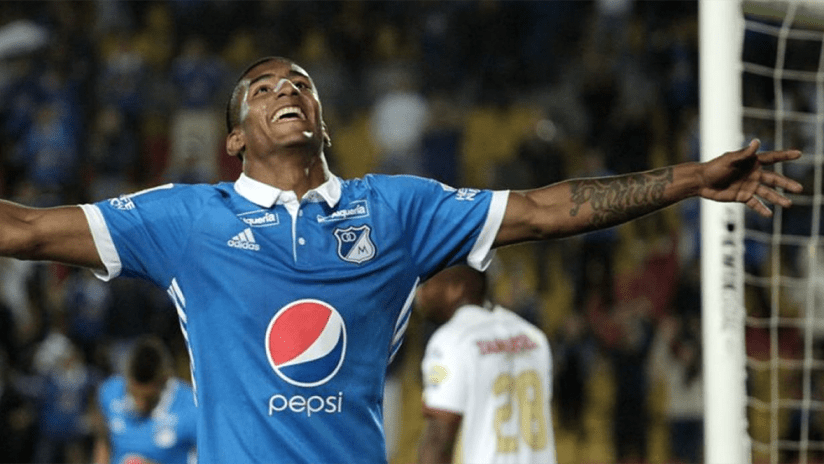FC Dallas dipped into the Designated Player market on Monday, signing 23-year-old Colombian attacker Santiago Mosquera to a Young DP deal.
The move was a permanent transfer, but, according to a source, it comes with a caveat: FCD paid Colombian club Millonarios $2 million for 50 percent of Mosquera’s player pass. That type of partial transaction has come up a few times in MLS this winter, with several teams sending a transfer fee to a foreign club in exchange for only a portion of a player’s rights.
So, what exactly does that mean?
Put simply, it indicates that the buying club and the selling club share the player’s future economic rights. In these “co-ownership” cases, the buying club gets a discount on a transfer fee in exchange for letting the selling club get a cut of any future transfer.
Most commonly, according to various club executives, it works something like this: If Club X buys 50 percent of Player Y’s rights from Club Z for $1 million, then later sells him to Club A for $3 million, Club X would first recoup the $1 million they spent in the initial transfer, then evenly split the $2 million remaining from Club A’s new transfer fee with Club Z. Club X would wind up with $2 million from Club A’s transfer fee, while Club Z, the player’s initial club, would land $1 million.
We’ve seen co-ownership in the past in MLS, with one notable recent example involving Houston Dynamo forward Mauro Manotas. Houston initially acquired Manotas via transfer from Colombian club Uniautonoma in 2015, but didn’t buy his full rights. That changed last March, when the Dynamo paid an undisclosed fee to Uniautonoma to acquire his rights in full.
A few years ago, this was all more complex. Prior to the practice being banned by FIFA in 2015, third parties were able to own a stake in players. The concept took plenty of different forms, but basically worked as follows: A third party – say, an agent, a sports marketing agency, a company or a single investor – could pay a club in exchange for a share of a player’s economic rights.
This was most commonly done by cash-poor clubs. They’d get a needed financial infusion from a third-party owner and use it to pay wages or buy a new player. The third-party owner would then be entitled to a cut of any future transfer fee involving the player they’d purchased a stake in.
The practice could sometimes be beneficial for all, but it often created potentially harmful situations for players and clubs. In some cases, the future moves of players could be dictated by the third parties, with examples emerging of independent investors writing clauses into contracts that allowed them to move the player to another club at a fee approved solely by them. In others, third party owners would attempt to influence playing time, lineup decisions and other club policies.
After several high-profile controversies involving third party ownership, FIFA banned the practice in 2015. Some have found various loopholes around it, but the practice is far less common than it used to be, and FIFA sanctions clubs who are found in violation of the ban.
While third party ownership is banned, co-ownership between clubs is still permitted on a global level and in MLS. The practice can help facilitate moves like Monday’s, where Dallas likely got a discount on Mosquera’s fee in exchange for letting Millonarios hold onto part of his future economic rights.













